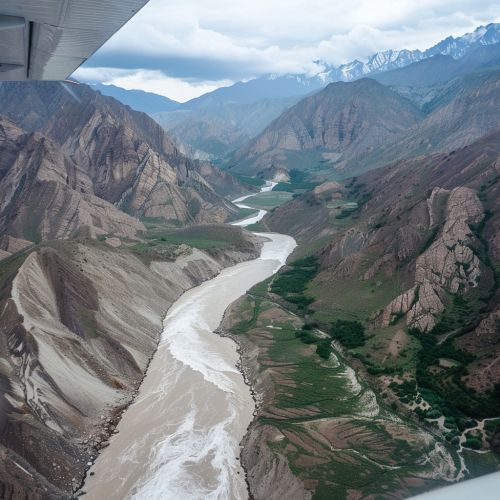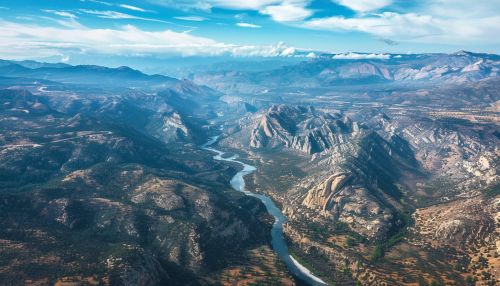River source: Difference between revisions
No edit summary |
No edit summary |
||
| Line 15: | Line 15: | ||
* '''Lake source''': A lake source is when a river begins its journey from a lake. The lake itself may be fed by smaller streams or springs. | * '''Lake source''': A lake source is when a river begins its journey from a lake. The lake itself may be fed by smaller streams or springs. | ||
[[Image:Detail-77891.jpg|thumb|center|A high altitude view of a river flowing from a mountain range.]] | [[Image:Detail-77891.jpg|thumb|center|A high altitude view of a river flowing from a mountain range.|class=only_on_mobile]] | ||
[[Image:Detail-77892.jpg|thumb|center|A high altitude view of a river flowing from a mountain range.|class=only_on_desktop]] | |||
== Determining the Source == | == Determining the Source == | ||
Latest revision as of 06:49, 8 May 2024
Origin and Definition
A river source is the primary point from which a river or a stream originates or starts its journey towards its mouth. The source of a river is usually found in high places such as mountains or hills, but can also originate from lakes, swamps, or springs. The source is often fed by precipitation, melting snow or ice, or even underground aquifers. The specific location of a river source can sometimes be difficult to determine due to the complex nature of drainage systems.
Classification of River Sources
River sources can be classified into several types based on their origin. These include:
- Spring source: A spring source is a point where water emerges from an aquifer to the surface of the earth. Springs are often the source of rivers in areas with limestone geology.
- Glacial source: Glacial sources are formed when a river originates from a glacier. The melting ice from the glacier feeds the river.
- Swamp or Marsh source: In some cases, a river may originate from a swamp or marsh. The water in these areas is often supplied by rain or underground sources.
- Lake source: A lake source is when a river begins its journey from a lake. The lake itself may be fed by smaller streams or springs.


Determining the Source
Determining the source of a river can be a complex task. It involves tracing the river upstream to its furthest point. This can be complicated by factors such as the presence of multiple tributaries, seasonal variations in water flow, and changes in the landscape. The source of a river is often considered to be the furthest point from the mouth, either in terms of linear distance or the length of the watercourse.
Importance of River Sources
River sources play a crucial role in the hydrological cycle. They provide a continuous supply of water that feeds into the river system. This water is essential for a variety of ecological processes and supports a diverse range of flora and fauna. River sources also have significant cultural and spiritual importance in many societies. They are often considered sacred and are associated with various myths and legends.
Threats to River Sources
River sources are under threat from a variety of factors. These include climate change, deforestation, pollution, and over-extraction of water. These threats can lead to a decrease in the volume of water flowing from the source, which can have serious implications for the river system and the ecosystems it supports.
Conservation of River Sources
Conservation of river sources is essential to maintain the health of river systems. This can be achieved through a variety of measures such as protecting the source area from deforestation, preventing pollution, and managing water extraction to ensure it is sustainable. In some cases, legal protections may be put in place to protect the source of a river.
